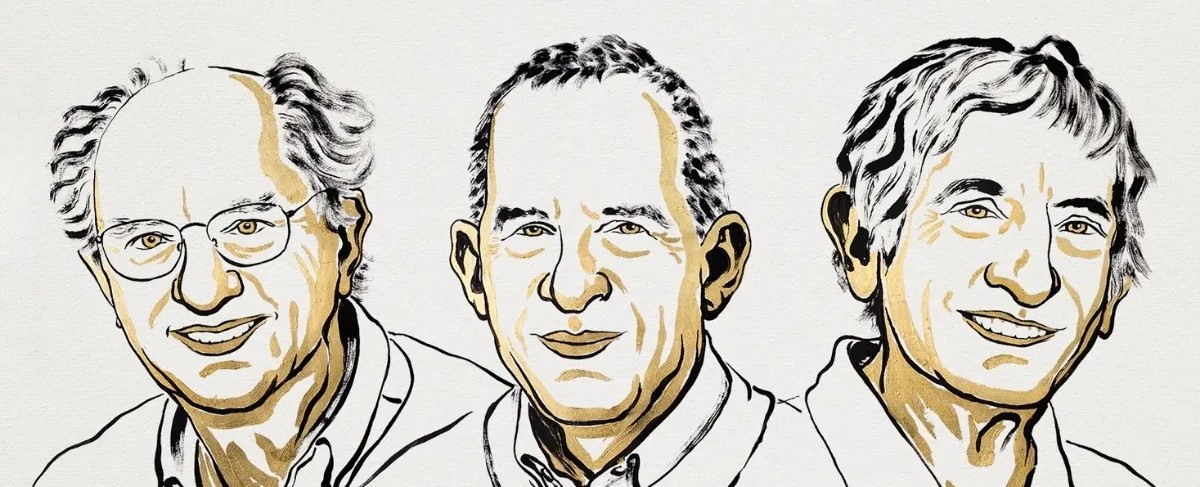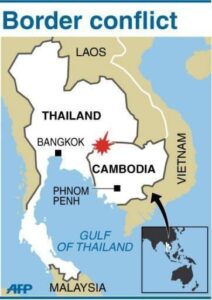🏛️ Awarding Body:
The Royal Swedish Academy of Sciences
🏅 Laureates:
Susumu Kitagawa – Kyoto University, Japan
Richard Robson – University of Melbourne, Australia
Omar M. Yaghi – University of California, Berkeley, USA
🎯 Award Citation:
“For the development of metal–organic frameworks (MOFs).”
🌍 Context & Significance
The laureates developed a new class of materials known as Metal–Organic Frameworks (MOFs).
These materials are crystalline structures with large, well-defined pores — allowing gases and other molecules to flow through them.
Their porous and tunable architecture has opened new frontiers in chemistry, materials science, and environmental technology.
🧱 What are Metal–Organic Frameworks (MOFs)?
MOFs are hybrid materials made by linking metal ions (or clusters) with organic molecules (ligands).
The metal ions act as cornerstones, and the organic linkers act as connectors forming a three-dimensional network.
These frameworks are porous, resembling a sponge or molecular cage.
The size, shape, and chemical properties of the pores can be precisely controlled.
⚗️ Historical Development
| Year / Scientist | Key Contribution |
|---|---|
| 1989 – Richard Robson | Combined positively charged copper ions with four-armed organic molecules → formed a spacious, ordered crystal with cavities. (However, it was unstable.) |
| 1992–2003 – Susumu Kitagawa | Demonstrated that gases can flow in and out of the frameworks; predicted that MOFs could be flexible. |
| 1995–2003 – Omar Yaghi | Created stable and robust MOFs; introduced rational design — meaning the structure and function of MOFs can be precisely engineered for specific uses. |
🔬 Key Features of MOFs
High Porosity:
Up to 90% of the structure can be empty space.
Provides an enormous surface area — 1 gram of MOF can have the surface area of a football field!
Customizable Architecture:
By altering metal ions and organic linkers, MOFs can be designed for specific tasks (e.g., capturing CO₂, storing hydrogen).
Reversible Adsorption:
They can absorb and release gases repeatedly without degrading.
Stability:
Modern MOFs (especially those developed by Yaghi) are chemically and thermally stable, allowing industrial applications.
🧩 Applications of MOFs
| Field | Application | Description |
|---|---|---|
| Environmental Protection | Carbon Capture | MOFs can trap CO₂ from industrial emissions efficiently. |
| Water Sustainability | Water Harvesting from Air | Some MOFs can absorb water vapor from desert air and release it as liquid water. |
| Pollution Control | PFAS & Pharmaceutical Removal | MOFs can filter out harmful chemicals from water. |
| Energy Sector | Hydrogen/Methane Storage | Used for safe, compact gas storage in clean energy systems. |
| Catalysis | Chemical Reactions | Act as heterogeneous catalysts, speeding up reactions within their porous networks. |
| Sensors & Electronics | Electrical Conductivity | Some MOFs can conduct electricity, used in chemical sensors. |
⚡ Scientific & Industrial Importance
MOFs represent a revolutionary shift in material design — from randomly porous materials (like zeolites) to precisely engineered ones.
They offer unprecedented control over molecular-level architecture.
Their multi-functionality makes them promising for tackling climate change, energy storage, and environmental remediation.
📚 Relevance for UPSC Examination
1. UPSC Prelims (Science & Tech Section):
Questions may focus on:
Full form and composition of MOF
Applications in carbon capture or water harvesting
Comparison with other porous materials like zeolites
Laureates’ contributions
Sample Question:
Which of the following best describes Metal–Organic Frameworks (MOFs)?
(a) Alloys used in renewable energy storage
(b) Porous crystalline materials made of metal ions and organic linkers
(c) Nanotubes designed for DNA sequencing
(d) Catalysts used only in petrochemical industriesAnswer: (b)
2. UPSC Mains (GS Paper III – Science & Technology):
Possible themes:
Role of nanomaterials and MOFs in sustainable development
Technological innovations for carbon capture and storage (CCS)
Scientific advancements with global environmental impact
Contribution of chemistry to sustainable technologies
Value Addition for Answers:
Quote from the Nobel Committee:
“Metal–organic frameworks have enormous potential, bringing previously unforeseen opportunities for custom-made materials with new functions.” – Heiner Linke, Chair of the Nobel Committee for Chemistry, 2025.
🧭 Broader Implications
MOFs exemplify interdisciplinary research — chemistry, physics, materials science, and environmental engineering.
They align with UN Sustainable Development Goals (SDGs), particularly:
SDG 6: Clean Water and Sanitation
SDG 7: Affordable and Clean Energy
SDG 13: Climate Action
💡 Summary
Innovation: Creation of customizable porous materials (MOFs).
Usefulness: From gas capture to clean water and energy storage.
Global Impact: Offers scientific tools to address climate and environmental challenges.
UPSC Relevance: Integrates science, technology, environment, and sustainable development — all core UPSC themeswww.victorgrowth.com






